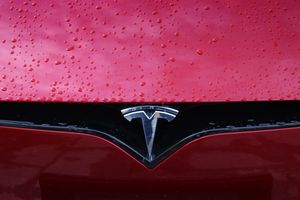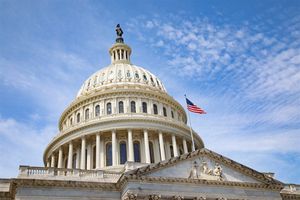
The global financial landscape is currently grappling with unprecedented levels of investor uncertainty, primarily fueled by the aggressive economic policy agenda unfolding under a potential second Trump administration. Since January 2025, a barrage of executive orders and sweeping tariff proposals has been implemented or is under active consideration, creating a volatile environment that is profoundly impacting business investment decisions. Companies worldwide are now facing a complex calculus of rapidly changing costs, disrupted supply chains, and a general lack of predictability, forcing a re-evaluation of long-term strategies and short-term operational tactics.
This proactive approach to economic governance, characterized by a fervent "America First" philosophy, has immediate implications for capital allocation. Businesses are delaying crucial investment and hiring decisions as they try to decipher the potential costs and benefits of a protectionist trade stance and a highly deregulated domestic environment. The specter of escalating trade wars and internal policy shifts is casting a long shadow over market confidence, urging caution among investors and corporate leaders alike.
Trump's Economic Blitz: Executive Orders and Tariffs Reshape the Landscape
A second Trump administration has wasted no time in unleashing an aggressive economic policy, moving swiftly to enact its "America First" agenda through an extensive series of executive orders and a dramatically expanded tariff regime. Within the initial months of this term, the administration reportedly issued four times more executive orders than in the equivalent period of his first presidency, underscoring a commitment to rapid and decisive policy implementation.
Key policy shifts include a robust drive for deregulation across various sectors, notably technology and energy, with an stated aim of creating an environment of "hyper deregulation." This push extends to government efficiency initiatives, exemplified by the establishment of the Department of Government Efficiency (DOGE) in January 2025, led by Elon Musk. DOGE's mandate is to drastically cut federal spending and dismantle various federal agencies, including significant portions of the United States Agency for International Development (USAID) and the Consumer Financial Protection Bureau, claiming over $160 billion in savings by April 2025, albeit with substantial layoff costs. Immigration policy has also seen a dramatic hardening, with aggressive executive orders targeting large-scale deportations and stricter work visa requirements, creating concerns about labor availability in sectors like agriculture and hospitality. Furthermore, Executive Order 14169, issued on January 20, 2025, mandated a 90-day pause on new foreign development assistance, impacting international education and research.
On the trade front, the administration has implemented and proposed a wide array of tariffs, escalating its protectionist stance significantly. A universal minimum tariff rate of 10% was imposed on all U.S. imports on April 2, 2025, with elevated rates on 57 other nations, taking effect just three days later. Tariffs on Chinese imports have seen an even sharper increase, reaching an effective 145% by April 9, 2025, up from an initial 10% in February. Sector-specific tariffs have also been widely applied: 25% on all steel and aluminum imports (effective March 12, 2025), universal 25% tariffs on automobiles and automotive parts (effective April 3, 2025), and a 50% tariff on copper imports (effective August 1, 2025). The International Emergency Economic Powers Act (IEEPA) was invoked on April 2, 2025, to impose "reciprocal tariffs," although federal courts have ruled these illegal; they remain in effect pending a Supreme Court review in November 2025. Adding to the complexity, the "de minimis" exemption, which allowed packages valued below $800 to enter without tariffs, was eliminated on August 29, 2025, under the IEEPA.
Beyond President Trump, key players include Scott Bessent, confirmed as Secretary of the Treasury on January 27, 2025, a staunch advocate for aggressive tariff strategies, especially against China and Russia. Howard Lutnick has been nominated as Secretary of Commerce, and Russell Vought as the Director of the Office of Management and Budget (OMB). Elon Musk's leadership of DOGE underscores a private sector influence on government restructuring. These policy shifts have sent shockwaves through global markets, with nearly $7 trillion USD reportedly erased from the S&P 500 since Trump's candidacy win in November 2024, and U.S. stocks down 11%. Economists broadly anticipate these tariffs will fuel inflation, potentially adding 0.3% to 1.7% to the inflation rate, pushing it to 3.5% by year-end 2025, and hindering potential interest rate cuts by the Federal Reserve. Business investment declined by an annualized -13.8% in the second quarter of 2025, illustrating the direct impact of this heightened policy uncertainty.
The Shifting Sands: Who Wins and Who Loses?
The aggressive economic agenda of a second Trump administration is creating a stark division between potential winners and losers across various industries, profoundly altering operational strategies and profit outlooks. The core aim of boosting domestic manufacturing and reducing trade deficits promises benefits for some, while imposing significant costs and disruptions on others.
Manufacturing Sector: Domestic manufacturers, particularly those in basic industries like steel, aluminum, and copper, stand to gain from reduced foreign competition and increased demand for U.S.-produced goods. Companies with strong U.S.-based production, such as steelmakers Nucor Corporation (NYSE: NUE) and Cleveland-Cliffs Inc. (NYSE: CLF), could see improved market share and profitability. Similarly, the automotive industry's domestic production might benefit in the long term, although initial tariffs on imported components could raise costs for General Motors (NYSE: GM) and Ford Motor Company (NYSE: F). Conversely, manufacturers heavily reliant on global supply chains, especially those sourcing from China, Mexico, or the EU, face significantly higher import costs and strained margins. This includes many electronics manufacturers and smaller businesses that lack the capital to quickly pivot their supply chains.
Technology Sector: In the technology space, domestic AI chip production is a potential winner. Efforts to fully onshore AI chip manufacturing, coupled with tariffs on imports from major hubs like Taiwan (e.g., Taiwan Semiconductor Manufacturing Company - NYSE: TSM) and the EU, could incentivize and benefit U.S.-based semiconductor manufacturers like Nvidia Corporation (NASDAQ: NVDA), which has announced significant investments in U.S. AI chip manufacturing. Cybersecurity and domestic AI companies could also see increased investment. However, major hardware companies such as Apple Inc. (NASDAQ: AAPL), HP Inc. (NYSE: HPQ), and Dell Technologies Inc. (NYSE: DELL), which rely on complex global supply chains centered in Asia, face substantial increases in production costs. This could lead to significantly higher consumer prices (e.g., iPhone prices potentially rising by 40%) or reduced profit margins. E-commerce giants like Amazon.com Inc. (NASDAQ: AMZN), heavily reliant on third-party vendors from China, would also face higher sourcing costs.
Agriculture Sector: The agriculture sector faces a largely negative outlook. Farmers of export-dependent crops like soybeans, corn, and pork, which rely heavily on markets in China, Mexico, and Canada, are likely to suffer from retaliatory tariffs, reduced foreign demand, and lower commodity prices. Companies like Archer-Daniels-Midland Company (NYSE: ADM) and Bunge Global SA (NYSE: BG) could see impacts on their global trading operations. U.S. tariffs on imported fertilizers, pesticides, and farm machinery components would further increase production costs, squeezing profit margins for agricultural businesses already operating on thin margins. Stricter immigration policies could also exacerbate labor shortages and drive up costs for farm operators.
Retail Sector: Retailers heavily reliant on global supply chains, such as Walmart Inc. (NYSE: WMT) and Target Corporation (NYSE: TGT), are poised to face significant headwinds. Increased sourcing costs from tariffs will either be passed on to consumers, leading to higher prices and potentially reduced demand, or absorbed by the companies, eroding profit margins. Apparel and footwear businesses are expected to be particularly hard hit due to their high reliance on imported goods. Conversely, retailers with predominantly U.S.-based supply chains or those capable of rapidly shifting to domestic sourcing might gain a competitive advantage by avoiding tariff impacts. Overall, the reduction in U.S. consumer purchasing power due to higher prices is expected to dampen demand across the retail sector.
Broader Implications: A Reshaped Global Economic Order
The aggressive economic policies under a second Trump administration signify a radical departure from decades of established trade norms, promising a period of profound disruption that extends far beyond immediate market reactions. These policies fit into and are expected to accelerate broader trends toward deglobalization and the "weaponization" of economic policy, as nations increasingly prioritize national security and economic self-sufficiency over multilateral trade agreements.
A primary industry trend impacted is the accelerated push for reshoring and diversification of supply chains. High tariffs are a direct incentive for manufacturers to relocate production back to the U.S., potentially boosting domestic manufacturing in critical sectors like semiconductors, batteries, electric vehicles, and AI-related technologies. This could further fuel the "China+1" strategy, where companies diversify their manufacturing bases away from China, benefiting countries like Vietnam, Mexico, and India. The energy sector, particularly traditional fossil fuels, is expected to benefit from significant deregulation, potentially leading to lower energy costs for U.S. manufacturers. Conversely, the consumer technology sector could see a notable decline in U.S. consumer purchasing power due to tariffs on imported tech products.
The ripple effects of these policies are expected to trigger intense global trade conflicts, potentially leading to "Trade Wars 2.0" and widespread retaliatory measures. Major trading partners, including China, the European Union, Canada, and Mexico, are poised to implement their own tariffs, harming U.S. businesses reliant on international markets, especially in agriculture and manufacturing. This "tit-for-tat" escalation could strain diplomatic ties, even with allies, potentially leading to legal challenges at the World Trade Organization (WTO) and a further fragmentation of global trade blocs. Other nations will be compelled to seek new trade alliances, and global companies will accelerate efforts to diversify supply chains, potentially shifting manufacturing and investment away from the U.S. while others reshore. Economically, the world could face lower growth, higher inflation, and increased market volatility due to policy uncertainty and disrupted trade, with U.S. exports becoming more expensive and multinational corporations facing devalued foreign earnings.
Regulatory implications are also substantial, with a second Trump administration expected to pursue a significant deregulatory agenda, potentially aiming for a "10-for-1" rule where ten regulations are eliminated for every new one introduced. While this aims to reduce the burden on businesses, it raises concerns about environmental, health, and labor protections. Executive orders, a primary tool for rapid policy implementation, are likely to push the boundaries of presidential authority, leading to immediate legal challenges and debates over the separation of powers. Historically, the most frequently cited comparison for aggressive tariff policies is the Smoot-Hawley Tariff Act of 1930, which, during the Great Depression, led to widespread retaliatory tariffs, significantly shrinking international trade, and deepening the economic crisis. While modern conditions differ, the lessons about unintended consequences and global economic stagnation remain pertinent. Past instances of U.S. tariffs, such as the Kennedy administration's steel tariffs in the 1960s and the 1980s trade wars with Japan over automobiles, also serve as precedents for strained diplomatic relations and retaliation.
What Comes Next: Navigating a Shifting Economic Tide
The path forward under a second Trump administration is fraught with both short-term boosts and long-term challenges, demanding strategic pivots from businesses and careful navigation by investors. In the immediate future, an extension and potential expansion of the 2017 Tax Cuts and Jobs Act (TCJA), possibly lowering corporate tax rates for domestic manufacturers to 15%, could offer an initial stimulus. Deregulation in sectors like energy, financial services, and cryptocurrency is also expected to reduce operational burdens and spur investment. However, these positives are likely to be overshadowed by inflationary pressures from tariffs and tightened labor markets due to restrictive immigration policies, potentially pushing the inflation rate higher and preventing significant interest rate cuts from the Federal Reserve. This combination could lead to slower real GDP growth and increased market volatility.
In the long term, the economic landscape could be fundamentally reshaped. Persistent inflationary pressures from tariffs and labor shortages may compel the Federal Reserve to maintain higher interest rates for longer, impacting borrowing costs and long-term investment. The intensification of "America First" trade policies is expected to permanently reconfigure global supply chains, leading to a more fragmented global economy with regional trade blocs. Fiscal challenges are also significant, as proposed tax cuts, without corresponding spending reductions, would add substantially to the national debt, raising concerns about long-term sustainability and potentially a "dollar crisis." Some analyses even point to a risk of "stagflation," where slower economic growth coexists with elevated inflation, creating a difficult environment for both businesses and consumers.
Businesses must adopt agile and resilient strategies to adapt. This includes diversifying supply chains away from heavily tariffed countries and increasing local production to mitigate tariff risks. Strategic tax planning will be essential to capitalize on potential extensions of the TCJA and new domestic manufacturing incentives. Continuous monitoring of tariff changes, export restrictions, and investment limitations will be crucial. For labor-intensive sectors, exploring automation and adjusting talent management strategies to account for stricter immigration policies will be paramount. Investors, meanwhile, will need to be prepared for persistent market volatility, focusing on resilient companies with strong free cash flow and those capable of navigating policy and technology shifts. Opportunities may emerge in domestic manufacturing, industrials, and traditional energy sectors, while import-reliant industries and clean energy could face headwinds. Real assets equities may serve as an effective hedge against persistent inflation.
Conclusion: A New Era of Economic Uncertainty
The economic policies under a second Trump administration herald a new era of profound investor uncertainty, fundamentally reshaping the financial landscape. The aggressive use of executive orders and widespread tariff proposals marks a decisive shift towards economic nationalism, prioritizing domestic industries over globalized trade. While some sectors, particularly domestic manufacturing and traditional energy, may experience short-term boosts from deregulation and protectionist measures, the overarching impact is likely to be increased inflationary pressures, higher costs for consumers and businesses, and significant disruptions to global supply chains.
The market moving forward is expected to be characterized by persistent volatility. Investors must be prepared for rapid policy shifts and their cascading effects on corporate earnings and economic growth. The ongoing legal challenges to tariffs and potential friction between the administration and the Federal Reserve will add further layers of complexity. The lasting impact could be a more fragmented global economy, with a significant re-evaluation of international trade relationships and investment flows, and a potential for sustained higher inflation than seen in recent decades.
In the coming months, investors should closely monitor the specifics of tariff implementations, especially their targets and any retaliatory measures from trading partners. Tracking inflation data and the Federal Reserve's response will be critical, as the trajectory of interest rates will heavily influence market performance. Evaluating companies' guidance on input costs and profit margins will provide crucial insights into how businesses are adjusting to supply chain reconfigurations. Finally, a continued focus on sector-specific opportunities (e.g., domestic industrials, energy) and risks (e.g., globalized tech, import-reliant retail) will be essential for navigating this challenging yet transformative economic environment. Diversification, as always, remains a cornerstone for mitigating risks amidst such unprecedented policy shifts.






